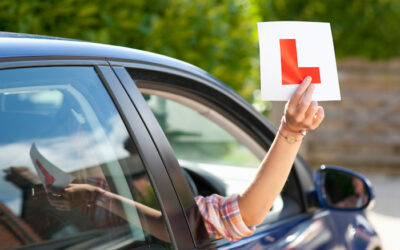If you’re a new driver or a learner, stalling your car can feel mortifying. When you come to a sudden halt, and when the cars behind you start beeping their horns, you start to feel like you’re holding the whole world up.

But we’re here to tell you that any driver can stall. All it takes is a single moment of distraction, or a slight case of nerves. All it takes to avoid stalling is care, focus, and practice.
Want to stop stalling your car? Read on…
Why Do Cars Stall?
Most instances of stalling are down to human error. All manual cars have a clutch, which is used to connect the power of the engine through the gears down to your wheels.
One of the first things you’ll have to get to grips with when learning to drive is finding your car’s “biting point”. This is the precise spot in which the two plates in the clutch meet to connect your car’s engine and wheels. A lot of stalls are caused by releasing the clutch too quickly, or by forgetting to apply the clutch when you’re slowing to a stop.
This is why stalling is most likely to occur when you’re in a queue of traffic, when you’re waiting to join a roundabout, and when you’re attempting a hill start. These situations can all be nerve-wracking, particularly for learners and inexperienced drivers. Combine this nervousness with the need to carefully slow, stop, and start your car, and it’s no wonder most new drivers go through a period of stalling.
Another issue: That biting point varies from car to car. For every different car you drive you’re going to have to familiarise yourself with a whole new biting point. It’s likely that when you finally take your driving test, you’ll be doing it in an unfamiliar car. One stall won’t cause you to fail your test. Your examiner will understand that even veteran drivers stall from time to time. What matters is how you deal with the situation.
The more you practice, the less you’ll stall. Also, no matter what car you’re driving, there’s a few steps you can follow to quickly recover from stalling, and even to reduce the chances of it happening in the first place.
How To Stop Stalling Your Car
It’s all about pulling away with grace and control. Practice these steps in your driveway at home, or in a quiet car park, until they become second nature:
- Press the clutch fully to the floor with your left foot
- Go into first gear
- Slowly press the accelerator with your right foot until the engine starts to rev
- Slowly lift the clutch until you reach the biting point – the revs will lower and your car will try to move forward
- As you continue to lift the clutch, and while still pressing the accelerator, release your handbrake
- Once your car starts moving, fully raise your foot from the clutch
These steps will also help you to recover from stalling. If you do stall, engage the handbrake, put your gear stick in neutral, and restart your engine.
Stalling can also happen when you’re coming to standstill. But this is relatively easy to avoid. Just put your clutch down – it needs to be at the biting point at speeds lower than 10mph.
Another tip: Try to stop in first gear. This means that when it’s time for you to pull away again, you’ll already be in the right gear.
What If You Stall During Your Driving Test?
There’s two things you need to bear in mind:
- Stay calm – If you feel under pressure, you may struggle to find that biting point. Of course, staying calm is easier said than done if you’ve stalled on a busy road. But take a deep breath and keep your composure: These things happen, and all drivers were learners at one point. So ignore their impatient beeps, just for the moment, and focus on your recovery. The sooner you recover, the sooner everyone can move on.
- Be alert – Check all around you before you start to move again, check all your mirrors and don’t forget to check your blind spot. If you stall during your test, it’s not the stall itself that could cause you to fail. It’s forgetting to check your mirrors, your blind spot and not observing your surroundings that’ll do it.
Stalling Your Car is a Rite of Passage
Never forget this: Everyone stalls their car from time to time. Stalling in itself is nothing to feel ashamed of. All that matters is how you deal with it.
Stalling in the middle of traffic can be dangerous, and as a learner driver, it can be all to easy to forget those all-important observations when you’re pulling away. So for extra peace of mind, make sure you’re covered with comprehensive learner driver insurance throughout your lessons.



